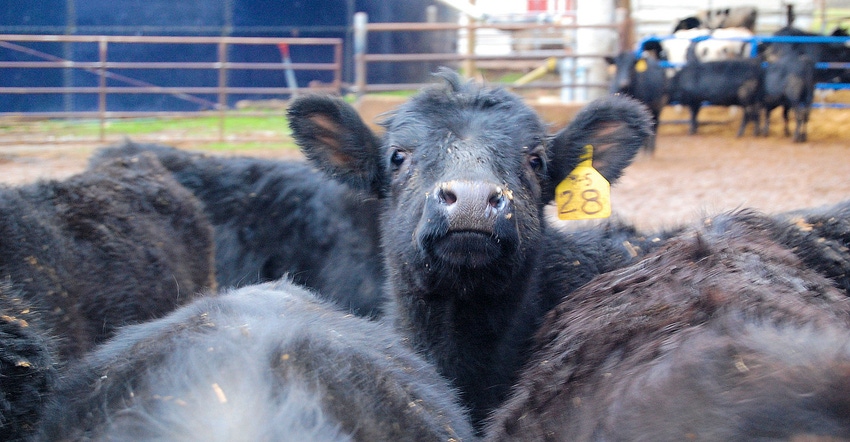
Forage expert Jessica Williamson says she’s getting lots of questions from farmers about feeding alternative feeds, especially since 2018 was so wet.
“A lot of folks couldn’t even get in their fields to harvest their forage,” she says. “And when they did get to harvest it, it was such poor quality. Sometimes you harvested your first, second, third cutting all at once.”
Speaking at Delaware Ag Week in Harrington, Del., Williamson says it’s a good idea for farmers to have alternatives when forage quality isn’t good, especially in wet years such as 2018. The key, though, is to remember the animals’ nutrition requirements and how that changes per growth stage.
For example, dry matter digestibility for stocker calves needs to be between 70% and 80%, but that lowers a bit for mature bulls (50%) and growing heifers and yearling bulls (60%).
Same goes for crude protein, she says, where it should be 12% to 14% for stocker calves; 10.5% for heifers and bulls; and 8% for dry cows.
Testing the forage is the best way to know what is being fed to the cattle. While Penn State doesn’t have a forage testing lab, she says there are several private labs that will do it for a fee, including the Dairy One Forage Lab in Ithaca, N.Y.
And crude protein in forage is an important factor, she says, because if levels drop below 7%, rumen motility is slowed.
So, what can be fed to supplement crude protein levels in forage? Williamson has five suggestions:
Corn gluten meal or corn gluten feed
Corn gluten meal will have higher crude protein than feed, but the feed still has a good protein value and is generally more economical. Gluten meal is more expensive, especially in poultry-heavy areas such as Delmarva.
The feed will also have more fiber.
Distiller’s grains
Distiller’s grains are largely a byproduct from the corn ethanol industry, of which there is very little being produced in the East. They can be wet or dry, she says, or with or without solubles.
The crude protein level is between 27% and 29% while the fat content ranges from 6% to 13%, depending on where the grains came from
Brewers grains
Brewers grains usually come from a brewer. They can be had for free, as brewers have trouble getting rid of them, but they are also very wet and very high in fat, Williamson says.
Storage is also going to be an issue. They will only store for up to a week in cold weather and only three to four days in hot weather. Protein levels are between 20% and 30%, and the fat content can be as high as 18%. “But cows love them,” she says.
Soybean hulls
Soybean hulls are on the lower end of the crude protein scale, but they will still bump up levels in the diet. There is a very high risk of bloat if the diet has more than 30% hulls.
“Make sure there is a lot of forage in the diet here,” she says.
Whole raw soybeans
Raw soybeans also are a good source of protein, but it must be limited to no more than 4 pounds per days.
In fact, 4 pounds a day for any of these supplements is a good amount, Williamson says.
Another possibility is lick tubs, of which there are hundreds of sources with different levels of protein and palatability. According to Williamson, though, there is very little university research on lick tubs. So, if you’re going to feed them, she says, find someone you trust.
About the Author(s)
You May Also Like






